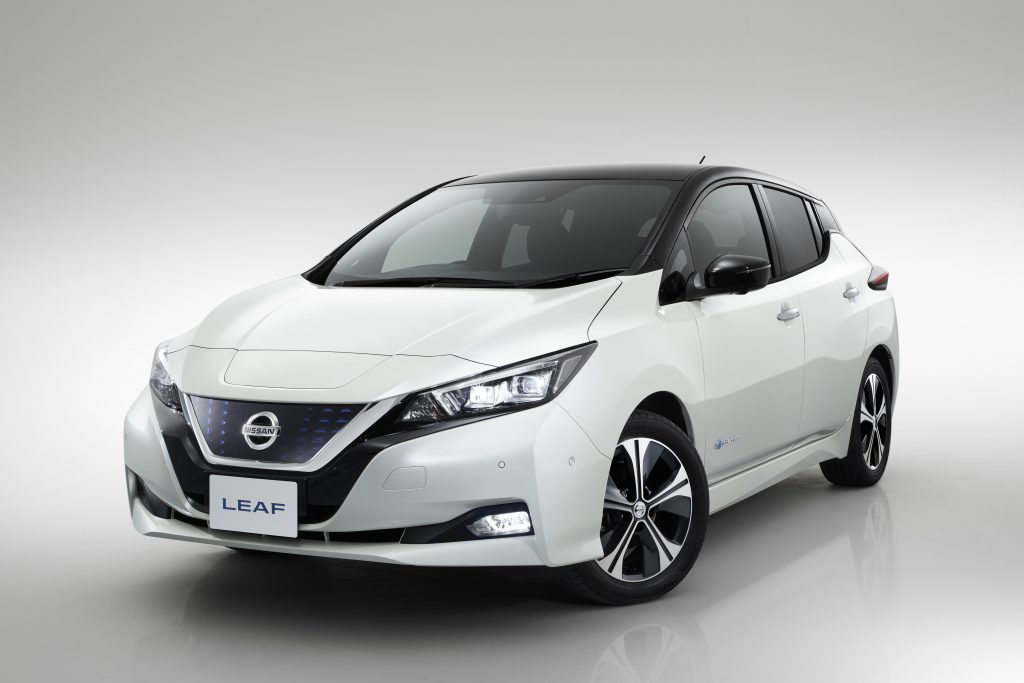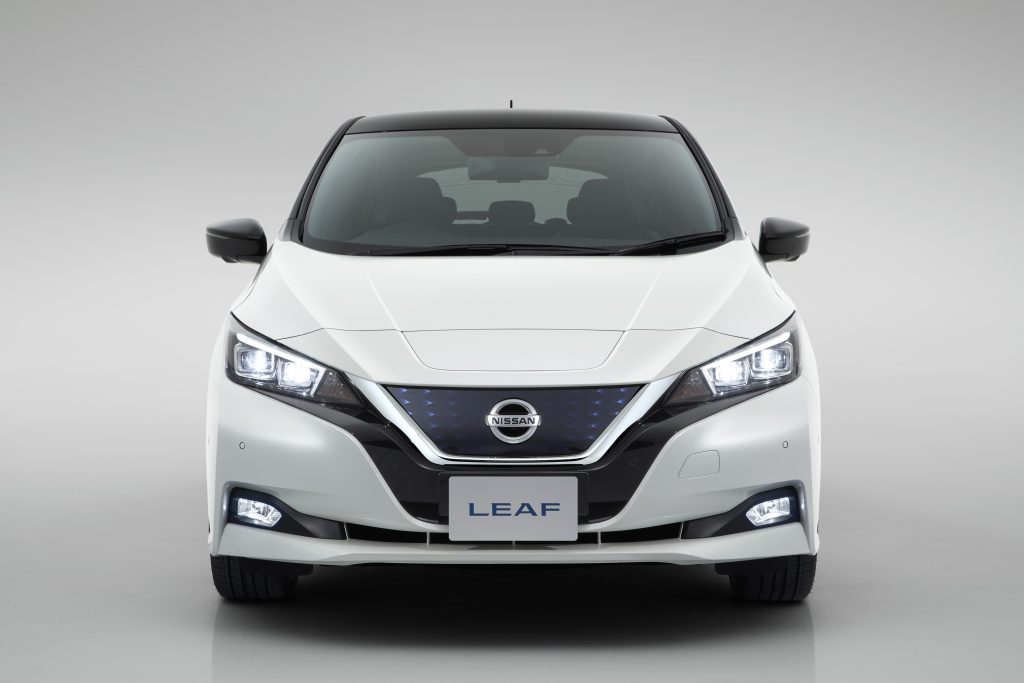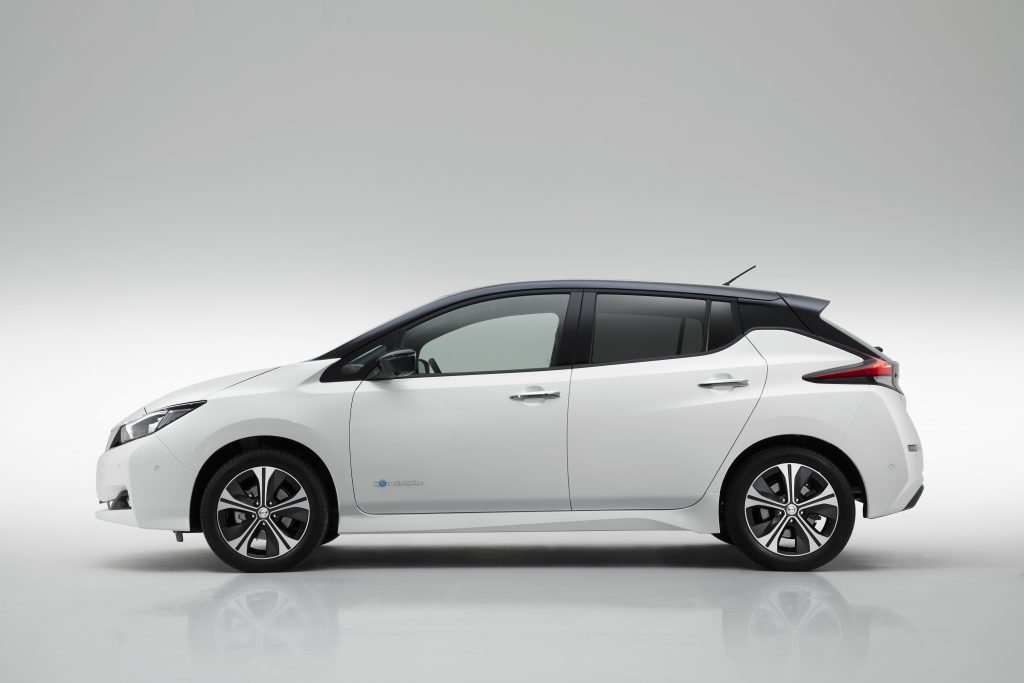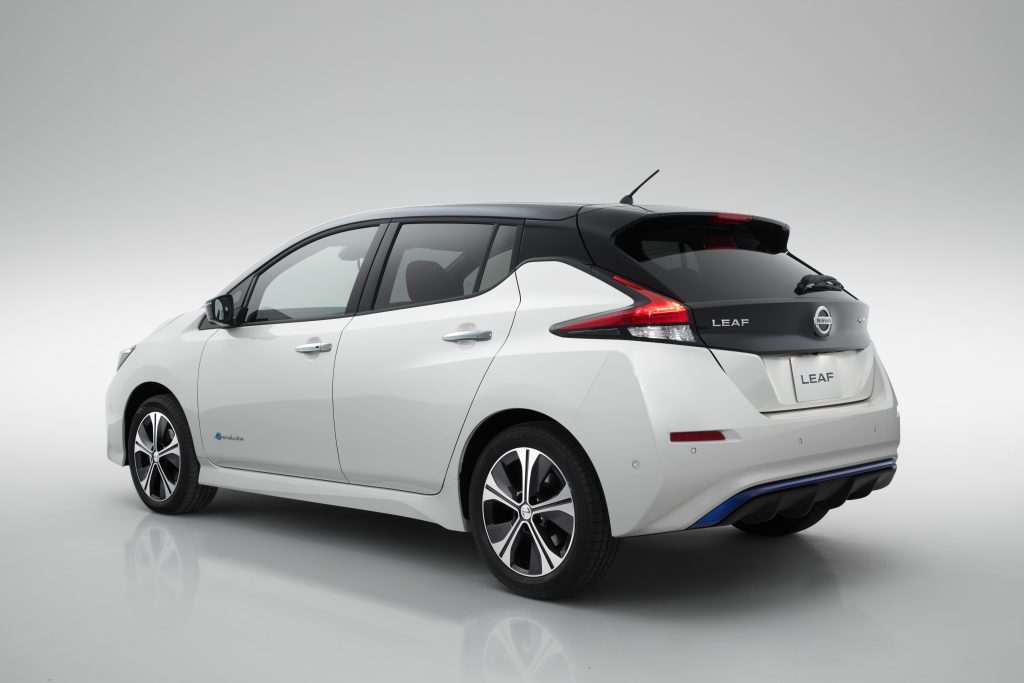NISSAN has today revealed its new Nissan LEAF — the world’s most advanced mass-market electric vehicle (EV) and icon of the company’s Intelligent Mobility vision.
All electric, and packed with ingenious technology, the new Nissan LEAF is the company’s first car in Europe that will embrace the early steps of advanced driver assistance, and is packed with cutting-edge innovations such as e-Pedal, allowing you to drive and brake in a totally new and seamless way.
It can also go further, with a range of 378 km/235miles (based on New European Driving Cycles) on a single charge, and has been redesigned for a new generation, with a sleeker look inside and out.
The new Nissan LEAF will be on sale in Europe from January 2018.
“The new Nissan LEAF drives Nissan Intelligent Mobility, which is the core brand strategy for Nissan’s future,” said Hiroto Saikawa, president and chief executive officer of Nissan. “The new Nissan LEAF, with its improved autonomy range, combined with the evolution of autonomous drive technology, such as ProPILOT Park and the simple operation of the e-Pedal, strengthens Nissan’s EV leadership, as well as the expansion of EVs globally. It also has the core strengths that will be embodied by future Nissan models.”
Nissan Intelligent Mobility is the company’s blueprint to redefine the future of driving and looks to progress the role of the car to be more than simply a mode of transport. Nissan Intelligent Mobility is defined by how the car is driven, how it is powered and how it integrates into society.
The new Nissan LEAF is the company’s on-road embodiment of Nissan Intelligent Mobility, with its early-stage of ProPILOT technologies, advanced all-electric powertrain and unique ability to connect to and power the buildings it plugs in to.
Nissan Intelligent Power: the e-powertrain
The focal point of Nissan Intelligent Power in the new Nissan LEAF is its e-powertrain, which offers improved energy efficiency and increased torque and power output for an enhanced dynamic performance. Complementing this new drivetrain is the high-tech lithium-ion battery pack, which delivers increased power and energy storage capacity.
Along with enhanced energy efficiency, the new e-powertrain delivers an exhilarating, linear driving performance with a power output of 110 kW. Torque has been increased to 320 Nm, resulting in improved acceleration.
The new Nissan LEAF’s driving range has been increased to 378km/235miles (New European Driving Cycle) on a single charge. For those who want to drive their new LEAF further, Nissan will introduce a high-power version with increased motor power and battery capacity at a higher price at the end of 2018. This version will provide an even longer range, giving customers a range choice depending on their driving needs.
Nissan Intelligent Driving: technology designed to improve driving enjoyment, enhance safety and reduce stress
The new Nissan LEAF features three main new intelligent driving technologies. The first is ProPILOT advanced driver assistance system. Used during single-lane driving on the highway, it makes the drive easier, less stressful and more relaxing.
The second, ProPILOT Park, will change the way people think about parking. When activated, this technology will take control of all steering, acceleration, braking and gear selection to automatically guide the car into a parking spot. It makes parking stress free and more precise for all drivers.
The third, e-Pedal, is a revolutionary technology that transforms the way we drive. It allows drivers to start, accelerate, decelerate and stop simply by adjusting their input upon the accelerator pedal. When the accelerator is fully released, regenerative and friction brakes are applied automatically, gradually bringing the car to a complete stop. The car holds its position, even on steep uphill slopes, until the accelerator is pressed again. The reactiveness of e-Pedal enables drivers to maximize their driving pleasure when the road opens up.
The conventional brake pedal must still be used in aggressive braking situations.
Nissan Intelligent Integration: linking battery power to social infrastructure
Nissan’s pioneering vision of the potential of electric vehicles doesn’t stop at powering the new Nissan LEAF. The car’s batteries can also be used as mobile energy devices.
Vehicle-to-Grid (V2G) technology combines two-way charging allowing electric vehicles to be fully integrated into the electricity grid. It helps improve the capability to handle non-programmable renewable energy flows, making renewable sources even more widely integrated and affordable. The system works by allowing Nissan EV owners to connect to the grid to play an active role in grid services, while providing the opportunity for an alternate source of income. Once scaled up, the V2G technology will be a game-changer for owners of Nissan electric vehicles as they become active participants in the energy market.
Working towards a more sustainable society means making better choices every day. xStorage, energy storage system, draws on the collective experience of the industry’s best to make home energy consumption more efficient and more sustainable. xStorage Home stores energy at the most economical times of the day while controlling how and when that energy is put to use, saving customers money and improving the entire energy system. It seamlessly integrates all the hardware and software needed to manage and store all of the energy the home needs in a single unit. Used to provide Grid services, xStorage Home could charge from the grid or discharge to the grid in order to generate the flexibility needed to further increase the usage of renewable energy.
Customers will also benefit from a newly designed interface on the new Nissan LEAF smartphone app which allows them to monitor their vehicle’s state of charge, finding the nearest charging station and pre-heating or cooling the car to the ideal temperature before driving.
Exterior design: sleek silhouette with a cool ‘tech’ attitude
The new Nissan LEAF’s design expresses the company’s forward-thinking attitude. The design was inspired by the IDS Concept car, which was first shown at the 2015 Tokyo Motor Show.
The front features Nissan’s signature V-motion grille, echoing the DNA it shares with Nissan’s other global top-sellers, such as the Nissan X-Trail and European favorite, the Nissan Qashqai. However, the grille’s blue color, a new signature feature for Nissan’s electric vehicles, sets it apart. The floating roof adds style and a sense of movement. The sleek LED headlamps feature Nissan’s characteristic boomerang design.
Interior design: a more premium feel with clean, quiet emotion
The new Nissan LEAF’s completely redesigned interior has a tasteful, understated look and feel. This has been achieved thanks to higher quality materials and overall fit and finish, elevating the “life on board” to be consistent with the refined nature of the drive.
Drivers and passengers will immediately appreciate the signature vibrant blue stitching in the seats, dashboard and steering wheel and the new look of the 7-inch, full-color (TFT) display. The display’s layout has been redesigned for easier access to key features such as the Safety Shield technology, state-of-charge, power gauge, and audio and navigation system information. In some countries, Apple CarPlay and Android Auto have been added to the infotainment system in cars equipped with the navigation system.
The new Nissan LEAF replaces the first-generation model, which has become the world’s best-selling electric vehicle. More than 283,000 customers have chosen the LEAF since the model went on sale in 2010.



